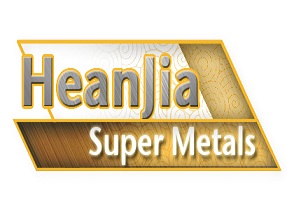You are here: home > Alloys House > Causes of contamination of tungsten in the Tungsten Welding
Product (738)
- Pure Nickel Products (38)
- Incoloy Products (74)
- Inconel Products (72)
-
FeCrAl Product
(99)

-
Nichrome Products
(68)

- Monel Products (36)
- Hastelloy Products (49)
- Nickel Iron Alloy Product (59)
-
Nickel Copper alloys
(47)

- Nonferrous Metal Product (27)
-
Resistance Wire
(90)

- Stainless Steel Product (42)
- Mesh Demister (20)
- Others (17)
Product Forms (14)
Quality Certificate (11)
Learning Gallery (30)
Incoloy News (9)
Inconel News (22)
Molybdenum News (7)
Nikrothal News (4)
Nichrome News (13)
Titanium News (2)
Nickel News (8)
Alloys House (30)
Tools (27)
Nickel alloy News (30)
Latest Buzz (30)
nickel chrome copper iron alloys news (28)
Credit Report
Products Index
Company Info
Heanjia Super-metals Co., Ltd. [China (Mainland)]
Business Type:Manufacturer, Trading Company
City: Beijing
Province/State: Beijing
Country/Region: China (Mainland)
Alloys House
Causes of contamination of tungsten in the Tungsten Welding
Tungsten contamination might be the main reason of slow welding process of tungsten. The welder must be careful for such conditions if they find the electrode tidy, the filler stick is not joined properly or melting sleekly in the welding region or if the arc becomes unreliable. The tungsten wire electrode can be contaminated if it is touch unknowingly in the working platform. In order to prevent such conditions, the welder can adjust the direction of torch and shift it further away from the working area. If the power source needs to follow the scratch start technique to begin the arc, in such case the electrode contagion can become the serious problem with respect to the machine capability to work under the high frequency or lift arc initialization.
Second reason of tungsten contagion is contacting the filler stick to the tungsten this issue can be solved by practicing more to get more experience in handling the welding process that includes the installation of filler stick in the welding platform. In few cases, insufficient shielding gas supply and post flow shielding after the welding has been halted, also cause the tungsten pollution.
Second reason of tungsten contagion is contacting the filler stick to the tungsten this issue can be solved by practicing more to get more experience in handling the welding process that includes the installation of filler stick in the welding platform. In few cases, insufficient shielding gas supply and post flow shielding after the welding has been halted, also cause the tungsten pollution.
According to thumb rule of titanium wire welding, the shielding gas supply is maintained at the rate of 10 – 20 foot3 per hour and a post supply for one second after the flow of 10 A current periodically. If the tungsten's color is changed from the light gray to purple of black, the welder must increase the post supply interval.
Since the contamination of tungsten causes the instability of arc just like other welding troubles. In order to solve the contamination problem the tungsten wire must be eradicated from the torch, end should be clipped and regrind. The welder must remember the rule that the tungsten must be grinded in the direction of its length instead of circumference grinding because the circumference grinding causes the creases on the electrode and leads to an erratic or roving arc. Since the grinding of taper on the tungsten leaves a gap of less than 2.5 times of electrode diameter such as one eighth times of electrode has a taper of one fourth to five by sixteen times of length. Finally using grinding wheel purposed for grinding tungsten restricts more contamination.
The weld puddle issues originate from the process of welding using abruptly long arc that becomes unbalanced and wandered without any purpose from the welding joint. In such case the welder should decrease the length of arc by shifting torch and taking the tungsten nearer the work portion however it should not tap in the electrode.
The contaminated base content and insufficiently pure shielding gas tends to instability to tungsten wire arc. Therefore the welders must take care of clearing the working content to make it free from the oil, debris or dirt and use the wire bust to eradicate the foreign materials to clean the welding alloys like aluminum alloy. The welding shield contains pure argon or combination of argon and helium in certain proportion in certain cases however reduce the use of helium to get the best outcomes.
Pre Page:
Introduction to Hastelloy C-276
Next Page:
Guidelines to Tungsten arc welding
.gif)


